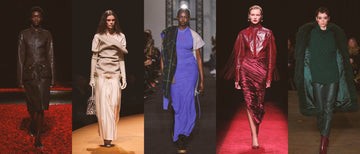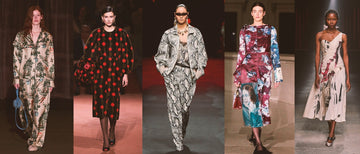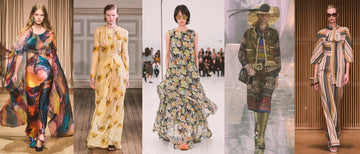The History of Tartan
Picture Perfect Plaid…
The Tartan is still widely worn throughout Scotland and is a massive part of Scottish culture today
Tartan is believed to have originated in Scotland in the third century C.E. In Scottish history, a tartan was originally a woven blanket, worn as a woolly cloak to keep warm in the cold and bitter winters. Tartan is synonymous with having many centuries of history embedded within each individual and unique pattern. For Scots, different patterns and colours are symbolic of and connected to different ‘clans’ or families, determined and grouped by surnames. This came about as centuries ago, people who lived in a ‘remote land’ would go to their local weaver to buy their woven blanket or cloth. However, the weaver would not have many options of colours, of which would be vegetable dyes, and would therefore reproduce the same pattern for each person. This in time led to the symbolism of certain tartans and their specific colours and patterns, being linked to regional clans.

The Tartan is still widely worn throughout Scotland and is a massive part of Scottish culture today still. The most well-known, typical Scottish association of this is, the kilt. These are probably most commonly and popularly known as being worn at Scottish weddings, by the groom, wedding party, and wedding guests. Although they are also widely worn throughout many family or traditional events, and with some people, the particularly patriotic, choosing them as regular attire.

Looking back to the history, over the decades, since the original uses of tartan, it has largely become one of the most iconic patterns in fashion. Particularly, by the 19th century, the tartan had started to gain a presence in the United States. This was largely due to an influx of Scottish immigrants, who brought with them their tradition/culture of tartan. Initially, a Scottish trader, Jock McCluskey, brought his home tartan over to the US and swapped the Native Americans for their Buffalo Plaid pattern. This was the beginning of the rise of the famous Buffalo Plaid, characterised by and well-known for its classic red and black coloured check. Continuing down the line and the subsequent pattern designs that evolved from here, plaid/tartan began to see itself becoming a workwear staple, as men’s plaid shirts began to be produced in the 1920’s, with Pendleton Woolen Mills being the first company to do so. These shirts were hugely successful, not only for men’s workwear, such as the traditional lumberjack shirt, but also as casual wear. This inevitably led to the woman’s plaid shirt also being introduced, at the end of the 1940’s, once again by Pendleton.
The next big moment for plaids was the 1970’s in the US, with a significant rise in popularity of the pattern again. The plaid was not only beginning to be seen on fashion, such as shirts, but also interiors! Shortly after the plaid’s introductions into the fashion and interiors world, people began to experiment with the traditional pattern and colours, leading to the resurgence of the plaid, but with a new look, Grunge. With the culture of rebellion in the 90’s, the Grunge Plaid became a symbol/uniform of this time. The heritage check pattern was worn as ripped-up and distressed styles, with a shift in colours to a more ‘punky’ look with deep pinks and blacks. Throughout the 90’s the plaid kept evolving and becoming more and more contemporary. A classic example of this is the well-known, iconic, yellow check plaid suit, sourced from Dolce and Gabbana, featured making its debut in the 90’s film Clueless. This was a pinnacle moment for plaid and its rising popularity in high street fashion.
To this day the plaid pattern is constantly evolving, changing, and adapting along with fashion trends. This is arguably the main reason for its continued popularity, despite being so simple - its versatility. In recent years plaid has graced the runway with big names including notably, Burberry and Balenciaga, in their Spring/Summer 2018 shows. Even as current as this year, you can see resemblances of the classic plaid pattern on runway shows forecasting trends for 2022. It is evident that the plaid is a pattern that is not going anywhere, whilst it has already been around for a while, it is still going to be around for a long time. It is considered a staple pattern, not only by the textile world and fashion shows, but also by the many people who every day incorporate the classic plaid style into their outfits and lives.
‘All tartans are plaids, but not all plaids are tartans.’
A well-used statement in many discussions around tartan/plaids today states, ‘All tartans are plaids, but not all plaids are tartans.’ While plaids are now designed in many pretty colours and in a range of contemporary woven structures/styles, a tartan carries a strong line of history and a proud statement of identity and pride with it, symbolistic of and a nod to the Scottish Ancestors who wore their tartan blankets proudly.

REFERENCES
Jude Stewart, Patternalia (New York: Bloomsbury, 2015)
https://www.smithsonianmag.com/smart-news/brief-history-plaid-180957342/
http://www.tartansauthority.com/tartan/the-birth-of-tartan/
https://blog.pendleton-usa.com/tag/pendleton-tartans/
https://psmag.com/social-justice/that-plaid-tho
 |
Katie Kelly |
| Katie Kelly is a recent Textile Design, and Business and Marketing Graduate from Scotland. She loves travelling, exploring new places and doing anything creative. While studying, Katie specialised in printed textiles, and loves creating all types of prints and patterns, especially experimenting with colour and texture! |









3 comments
I enjoyed this article… thank you for writing it…..great piece
It’s amazing how far plaids have come, a journey of nearly 1000 years. Excellent historical interpretation. Very enlightening indeed!